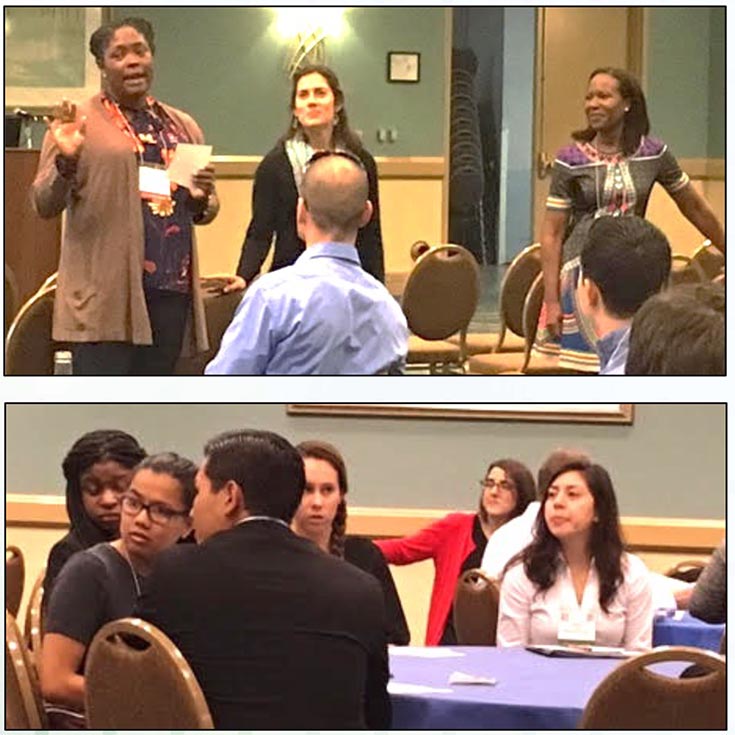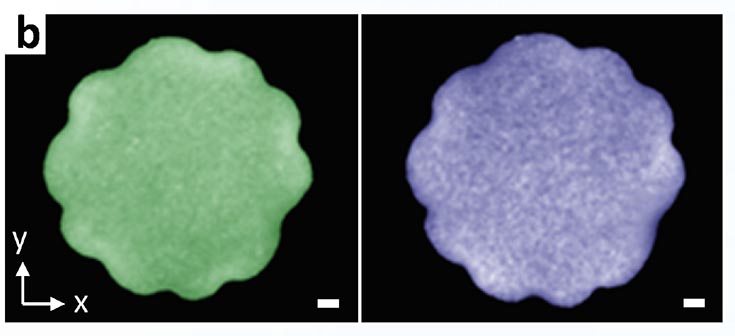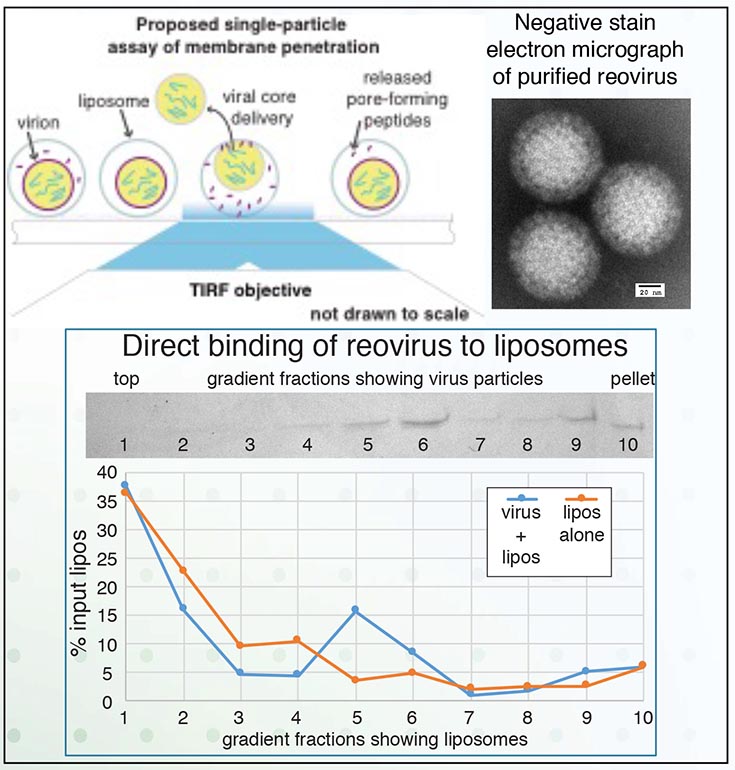2017 Research Highlights

This year, the MRSEC organized a series of eight professional development workshops for Waltham Public School science teachers called, “Brandeis Scientists in the Classroom.” The goals of the series were 1) to provide Waltham teachers with exposure to cutting-edge science and materials for in-class lessons, and 2) to provide teaching experience for Brandeis scientists that would reveal the authentic connections between exciting, current research and classroom concepts. Over the course of the series, 29 teachers and 35 scientists (five of whom were faculty) participated in the workshops. The year-long series led to five classroom visits in which the scientists talked about their journeys into science and discussed their research. Showcasing who does science inspires diverse students and broadens participation of underrepresented groups in STEM.
To disseminate this initiative, the MRSEC developed a workshop called, “Partnering to Inspire: Bringing Your Scientists into the Classroom.” It was presented at the 2017 National Alliance for Broader Impacts Summit.

The MRSEC Education, Outreach and Diversity Director (A. Olivier-Mason) co-developed and co-facilitated a workshop at the 2016 Annual National Society for the Advancement of Chicanos/Latinos and Native Americans in Science (SACNAS) Conference, a scientific conference with >4K attendees from around the country, many of them from underrepresented minority backgrounds. The workshop was called, “The Essential Roadmap for Undergraduate Success in Science Research” and was created with diversity colleagues at Brown University and MIT to equip diverse undergraduates with the tools necessary for them to succeed in scientific research. There were 74 participants, including several faculty, for the 90-minute workshop. This initiative also served to introduce SACNAS Conference attendees to Brandeis and encourage them to apply to the MRSEC REU and graduate programs.

Using molecular modeling, the Biological Materials Facility Director helped researchers understand the underlying structures of the filamentous bacteriophages, which comprise the colloidal membranes studied in IRG1: Membrane based Materials. These colloidal membranes guide both theorists and experimentalists by enabling precise measurements of the molecular features responsible for the partitioning of chiral and achiral rods into rafts.
The tools and expertise of the Biological Materials Facility were employed to edit the DNA of existing bacteriophages in order to change their chirality, which were used in experiments aimed at characterizing the partitioning phenomenon.

Image of a scalloped colloidal membrane, whose edge had periodically undulating 3D structure. The membrane is assembled from a mixture of one-micron long rods of opposite chirality, so that its effective net chirality is zero. Both rods are fluorescently labeled with two distinct dyes. The two images illustrate that the rods are uniformly mixed throughout the membrane interior. Scale bar is 3 microns.
A number of essential processes in biology and materials science, such as vesicle fusion and fission as well as pore formation, change the membrane topology and require formation of saddlesplay surfaces. The energetic cost associated with such deformations is described by the Gaussian curvature modulus. We show that flat 2D colloidal membranes composed of achiral rods are unstable and spontaneously form scalloped edges. Quantitative analysis of this instability provides estimates of the Gaussian curvature modulus of colloidal membranes. The measured sign and magnitude of the modulus can be explained by a simple excluded volume argument that was originally developed for polymeric surfactants.

Biological membranes are deformed and shaped by proteins that assemble into higher-order scaffolds. These scaffolds target the force-generating polymerization of actin filaments to deform and shape the membrane.
MRSEC experiments show that membrane-remodeling proteins can be maintained in an autoinhibited state, preventing spurious actin polymerization in solution. Release from autoinhibition by multiple coincident inputs ensures that force is generated only at the membrane.
These principles can be applied to nanoparticles and engineered proteins to shape membranes in a temporally and spatially controlled fashion.

Increasing the height of the annulus induces a transition from locally turbulent to globally-coherent flows of a confined active isotropic fluid. The left and right half-plane of each annulus illustrate the instantaneous and time-averaged flow and vorticity map of the self-organized flows. The transition to coherent flows is an intrinsically 3D phenomenon that is controlled by the aspect ratio of the channel cross-section, and vanishes for channels that are either too shallow or too thin. Wu et. al, Science, 355, eaal1979 (2017)
Navier-Stokes equations dictate that the conventional fluid flows only in response to an externally imposed gradient in stress or a body force. We developed a novel active fluid that is comprised of microtubules and energy consuming molecular motors kinesin. We demonstrate that upon confinement, such active fluids undergo an inherently non-equilibrium transition from local chaotic flows to globally coherent flows that have long range order and are capable of transporting matter on macroscopic (meter) lengthscales. Our work uncovers a simple scale invariant criterion that predicts the location of the transition to coherent flows, and demonstrates that the formation of coherent flow is accompanied by the formation of a nematic layer that wets the confining boundaries at a specific oblique angle.

There is a critical domain size (dependent on the amount of active stress that can be created by the material) beyond which the system transitions from an ordered state consisting of two corotating defects (right column) to a disordered turbulent state (left column). An image from the experiment (far right) shows the turbulent regime.
Active materials are dense collections of self- or mutuallypropelling particles. When the particles are elongated (such as microtubules), they align with their neighbors when packed together. However, this order is punctuated by localized regions of disorder known as topological defects. Defects are categorized by their topological “charge” (+/- ½, labeled in pink/blue), as shown in the left panel. The behavior of an active material confined within a twodimensional disc -shaped corral was studied experimentally and theoretically. It was found that topological and hydrodynamic constraints resulting from confinement dramatically change its behavior as compared to an unconfined system.

To infect cells, viruses must translocate their genome across the cell membrane. For nonenveloped viruses – those lacking the membrane envelope – the process of membrane penetration is poorly understood. The Seed project in the Ivanovic lab seeks to establish a single molecule imaging-based approach to study membrane penetration by reovirus, a model nonenveloped virus.
The main challenge of this experimental strategy is to develop a method for enclosing virions in membrane vesicles. This has been achieved previously for proteins (~1e5Da), but not for a thousand-fold larger virus particles (~1e8Da). One approach being explored is to facilitate virion envelopment by membranes during liposome formation by including membrane components that bind virions. Ivanovic has generated high-purity reovirus preparations and demonstrated direct binding of virions to synthetic liposomes. This sets the stage for virion envelopment experiments.

(a) Synthesis of CrBDT MOFs. (b) and (c) N2 adsorption isotherms of reduced and oxidized CrBDT MOFs. (d) Structural forms of a flexible MOF.
Porous materials that undergo structural changes in response to external stimuli hold potential in molecular sensing and gas storage or separation applications. The accordion-like breathing behavior of a metal-organic framework (MOF) constructed from ditetrazolate linkers and redox active Cr metal ions has been investigated. The reduced (CrII) form of CrBDT has a flexible structure that responds to changes in N2 pressure, and the response is dependent on the nature and amount of guest solvent molecules residing in the porous framework. Oxidized (CrIII) forms of CrBDT do not exhibit N2 adsorption steps indicative of breathing behavior, demonstrating that metal-based redox processes can be used to regulate structural flexibility.

